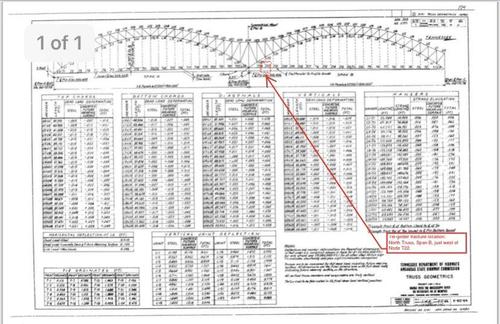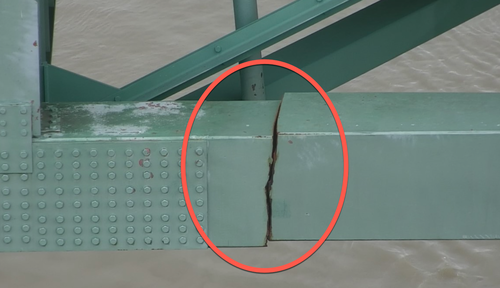The Urethane Blog
Everchem Updates
VOLUME XXI
September 14, 2023
Everchem’s exclusive Closers Only Club is reserved for only the highest caliber brass-baller salesmen in the chemical industry. Watch the hype video and be introduced to the top of the league: — read more
May 17, 2021
Mitsui Chemicals net profit up 70.3% last year May 17/2021 MOSCOW (MRC) — Mitsui Chemicals’ net profit for the fiscal year ending March 2021 posted 70.3% growth despite lower sales, as profitability of its basic materials business benefited from better overseas markets, said the company.
Lower group sales were attributed to declines in product prices, dragged down by falls in values of naphtha and other raw materials and fuel amid the coronavirus pandemic. Its basic materials segment reported a 12.6% year-on-year decline in sales to Y541.4bn, but operating income before special items more than doubled to Y19.6bn from Y9.4bn in the previous fiscal year “due to improved overseas market”.
Mitsui Chemicals said that operating rates at its naphtha crackers were lower than the previous fiscal year due to decreased demand for downstream products, caused by the impact of the coronavirus. “Performance of polypropylene was affected by slowing demand for automotive products. For bisphenol A (BPA) and acetone, the overseas market was at a higher level than the previous fiscal year,” the Japanese producer said.
For the current fiscal year ending March 2022, Mitsui Chemicals is projecting higher earnings, in line with the global economic recovery from a pandemic-induced slump in 2020. Basic materials should be able to generate sales of Y635bn and yield an operating profit before special items of Y36bn, based on the company’s forecasts. “In the chemical industry, although demand is expected to expand due to signs of economic recovery, chemical companies should remain vigilant regarding fluctuations of raw materials and other chemical product markets,” it said.
As per MRC, Kumho Mitsui Chemicals Inc. said it will invest about 400 billion won (USD358.1 million) to expand its chemical manufacturing factory in South Korea’s southwestern region. The joint venture between Korean synthetic rubber maker Kumho Petrochemical and Mitsui Chemicals of Japan said its shareholders approved the investment plan to scale up a methylene diphenyl diisocyanate (MDI) factory in Yeosu, 455 kilometers southwest of Seoul.
Phenol is the main feedstock component for the production of bisphenol A (BPA), which, in its turn, is used to produce polycarbonate (PC).
According to MRC ScanPlast report, Russia’s overall estimated consumption of PC granules grew in the Russian market by 27% year on year in January-February 2021 (excluding imports and exports to/from Belarus) to 16,000 tonnes, compared to 12,600 tonnes a year earlier. 
http://www.mrcplast.com/news-news_open-387766.html
May 17, 2021
Mitsui Chemicals net profit up 70.3% last year May 17/2021 MOSCOW (MRC) — Mitsui Chemicals’ net profit for the fiscal year ending March 2021 posted 70.3% growth despite lower sales, as profitability of its basic materials business benefited from better overseas markets, said the company.
Lower group sales were attributed to declines in product prices, dragged down by falls in values of naphtha and other raw materials and fuel amid the coronavirus pandemic. Its basic materials segment reported a 12.6% year-on-year decline in sales to Y541.4bn, but operating income before special items more than doubled to Y19.6bn from Y9.4bn in the previous fiscal year “due to improved overseas market”.
Mitsui Chemicals said that operating rates at its naphtha crackers were lower than the previous fiscal year due to decreased demand for downstream products, caused by the impact of the coronavirus. “Performance of polypropylene was affected by slowing demand for automotive products. For bisphenol A (BPA) and acetone, the overseas market was at a higher level than the previous fiscal year,” the Japanese producer said.
For the current fiscal year ending March 2022, Mitsui Chemicals is projecting higher earnings, in line with the global economic recovery from a pandemic-induced slump in 2020. Basic materials should be able to generate sales of Y635bn and yield an operating profit before special items of Y36bn, based on the company’s forecasts. “In the chemical industry, although demand is expected to expand due to signs of economic recovery, chemical companies should remain vigilant regarding fluctuations of raw materials and other chemical product markets,” it said.
As per MRC, Kumho Mitsui Chemicals Inc. said it will invest about 400 billion won (USD358.1 million) to expand its chemical manufacturing factory in South Korea’s southwestern region. The joint venture between Korean synthetic rubber maker Kumho Petrochemical and Mitsui Chemicals of Japan said its shareholders approved the investment plan to scale up a methylene diphenyl diisocyanate (MDI) factory in Yeosu, 455 kilometers southwest of Seoul.
Phenol is the main feedstock component for the production of bisphenol A (BPA), which, in its turn, is used to produce polycarbonate (PC).
According to MRC ScanPlast report, Russia’s overall estimated consumption of PC granules grew in the Russian market by 27% year on year in January-February 2021 (excluding imports and exports to/from Belarus) to 16,000 tonnes, compared to 12,600 tonnes a year earlier. 
http://www.mrcplast.com/news-news_open-387766.html
May 15, 2021
Darkside Retreats to the Dark
After announcing that its criminal infrastructure has been taken down due to U.S. law enforcement pressure, the Darkside ransomware gang says it’s retreating. But is it?
| Kim Zetter | 4 hr ago |

The Darkside gang began last Friday with a bang; but they may be ending their operations a week later with a whimper. Or they may be pulling another scam — this time to cheat affiliates out of their share of the ransom take.
After pulling in at least $9 million from two victims — $5 million paid by Colonial Pipeline on May 8 and about $4.4 million paid by the chemical distribution company Brenntag on May 11 — the developers behind the Darkside ransomware went offline.
Their dark web site — previously accessible only through the Tor browser — became unavailable on Thursday, and someone from a rival ransomware gang posted a message to a forum that was purportedly from the developer of the Darkside ransomware code. The message said the Darkside founders had lost access to the site where they hosted and published data stolen from ransomware victims who refused to pay, and they also lost access to the payment server and other infrastructure they need to collect payment and run their operations.
“A few hours ago, we lost access to the public part of our infrastructure, namely : Blog, Payment server, DOS servers,” reads a since-deleted message from a user called Darksupp, according to The Record, a publication of Recorded Future. The service provider that hosted the infrastructure told the Darkside operators that the sites and servers were taken down “at the request of law enfocement [sic] agencies.” Darksupp also said that cryptocurrency had been withdraw from the wallet they used to store payments from ransomware victims.
There’s reason to believe that at least some of this is true. Reuters and Bloomberg reported earlier this week that companies assisting Colonial Pipeline in their response to the incident worked with the FBI to get a hosting provider in New York to shut down a server that was storing data stolen from Colonial Pipeline before the thieves could transfer it to Russia, where the perpetrators are believed to be based.
And on Friday, Elliptic, a blockchain analytics company which also makes compliance tools for cryptocurrency businesses to monitor transactions, reported that it had identified the Bitcoin wallet used by the Darkside gang. The company said that on Thursday, the wallet — which still held $5 million in Bitcoin — was emptied.
Some have suggested this could be a ruse on the part of the Darkside gang to avoid sharing ransom proceeds with their affiliates who carried out the ransomware operation against Colonial Pipeline. Without knowing where the funds went, however, it’s difficult to know if the FBI seized it or if the Darkside gang emptied the wallet themselves.
The wallet, according to Elliptic, became active on March 4th and received 57 payments from 21 other Bitcoin wallets, totalling $17.5 million.
“Some of these payments directly match ransoms known to have been paid to DarkSide by other victims, such as 78.29 BTC (worth $4.4 million) sent by chemical distribution company Brenntag on May 11,” the company noted.
If authorities did seize $5 million in Bitcoin that was still sitting in the Darkside wallet, it’s only a fraction of what the criminal syndicate had already laundered out of the wallet since March.
According to Elliptic, about 18% of the wallet’s contents was sent to a small group of cryptocurrency exchanges, where Bitcoin is traded among buyers and sellers. “This information will provide law enforcement with critical leads to identify the perpetrators of these attacks,” the company noted. “An additional 4% has been sent to Hydra, the world’s largest darknet marketplace, servicing customers in Russia and neighboring countries.”
Hydra allows users to cash out their Bitcoin by converting it to cash or loading sums onto prepaid debit or gift cards.
In addition to Darkside’s retreat, another top ransomware group known as REvil has announced that it plans to stop advertising its ransomware service and instead “go private” by working with only a small group of trusted affiliates, The Record reported.
Some are cautioning that the moves by Darkside and REvil don’t mean their activity will stop; just that the operators plan to become less flashy in order to attract less law enforcement attention.
“I sincerely hope the Infosec community and media don’t lose their minds over thinking DarkSide is actually shutting down when it’s almost certainly a rebranding attempt to avoid the heat,” Robert M. Lee, CEO of the security firm Dragos wrote on Twitter on Friday.
May 15, 2021
Darkside Retreats to the Dark
After announcing that its criminal infrastructure has been taken down due to U.S. law enforcement pressure, the Darkside ransomware gang says it’s retreating. But is it?
| Kim Zetter | 4 hr ago |

The Darkside gang began last Friday with a bang; but they may be ending their operations a week later with a whimper. Or they may be pulling another scam — this time to cheat affiliates out of their share of the ransom take.
After pulling in at least $9 million from two victims — $5 million paid by Colonial Pipeline on May 8 and about $4.4 million paid by the chemical distribution company Brenntag on May 11 — the developers behind the Darkside ransomware went offline.
Their dark web site — previously accessible only through the Tor browser — became unavailable on Thursday, and someone from a rival ransomware gang posted a message to a forum that was purportedly from the developer of the Darkside ransomware code. The message said the Darkside founders had lost access to the site where they hosted and published data stolen from ransomware victims who refused to pay, and they also lost access to the payment server and other infrastructure they need to collect payment and run their operations.
“A few hours ago, we lost access to the public part of our infrastructure, namely : Blog, Payment server, DOS servers,” reads a since-deleted message from a user called Darksupp, according to The Record, a publication of Recorded Future. The service provider that hosted the infrastructure told the Darkside operators that the sites and servers were taken down “at the request of law enfocement [sic] agencies.” Darksupp also said that cryptocurrency had been withdraw from the wallet they used to store payments from ransomware victims.
There’s reason to believe that at least some of this is true. Reuters and Bloomberg reported earlier this week that companies assisting Colonial Pipeline in their response to the incident worked with the FBI to get a hosting provider in New York to shut down a server that was storing data stolen from Colonial Pipeline before the thieves could transfer it to Russia, where the perpetrators are believed to be based.
And on Friday, Elliptic, a blockchain analytics company which also makes compliance tools for cryptocurrency businesses to monitor transactions, reported that it had identified the Bitcoin wallet used by the Darkside gang. The company said that on Thursday, the wallet — which still held $5 million in Bitcoin — was emptied.
Some have suggested this could be a ruse on the part of the Darkside gang to avoid sharing ransom proceeds with their affiliates who carried out the ransomware operation against Colonial Pipeline. Without knowing where the funds went, however, it’s difficult to know if the FBI seized it or if the Darkside gang emptied the wallet themselves.
The wallet, according to Elliptic, became active on March 4th and received 57 payments from 21 other Bitcoin wallets, totalling $17.5 million.
“Some of these payments directly match ransoms known to have been paid to DarkSide by other victims, such as 78.29 BTC (worth $4.4 million) sent by chemical distribution company Brenntag on May 11,” the company noted.
If authorities did seize $5 million in Bitcoin that was still sitting in the Darkside wallet, it’s only a fraction of what the criminal syndicate had already laundered out of the wallet since March.
According to Elliptic, about 18% of the wallet’s contents was sent to a small group of cryptocurrency exchanges, where Bitcoin is traded among buyers and sellers. “This information will provide law enforcement with critical leads to identify the perpetrators of these attacks,” the company noted. “An additional 4% has been sent to Hydra, the world’s largest darknet marketplace, servicing customers in Russia and neighboring countries.”
Hydra allows users to cash out their Bitcoin by converting it to cash or loading sums onto prepaid debit or gift cards.
In addition to Darkside’s retreat, another top ransomware group known as REvil has announced that it plans to stop advertising its ransomware service and instead “go private” by working with only a small group of trusted affiliates, The Record reported.
Some are cautioning that the moves by Darkside and REvil don’t mean their activity will stop; just that the operators plan to become less flashy in order to attract less law enforcement attention.
“I sincerely hope the Infosec community and media don’t lose their minds over thinking DarkSide is actually shutting down when it’s almost certainly a rebranding attempt to avoid the heat,” Robert M. Lee, CEO of the security firm Dragos wrote on Twitter on Friday.
May 14, 2021
Nearly 800 Barges Stuck In Lower Mississippi River From Bridge Crack
by Tyler DurdenFriday, May 14, 2021 – 08:56 AM
Earlier this week, in a routine bridge inspection, an engineer climbed onto the section of the Interstate 40 bridge over the Mississippi River and spotted a massive fracture in the frame that resulted in the immediate shutdown of the bridge on Wednesday. Traffic is being rerouted to Interstate 55 Memphis & Arkansas Bridge, creating traffic jams in the Memphis area. On the Mississippi River, the situation is much worse. Hundreds of barrages are piling up on either side of the bridge as the US Coast Guard has closed the critical waterway.
After a routine inspection, officials with the Tennessee Department of Transportation (TDOT) announced that the Hernando de Soto Bridge would be closed due to a crack on the bottom side of the bridge truss.

Here’s a diagram of the bridge and where the fracture in the beam occurred.

A picture of the massive fractured beam. The repair could take weeks, if not months, to fix.

While road traffic is chaotic in the Memphis metro area, a much larger and possibly underreported story is the closure of the lower Mississippi River that is a critical waterway for the transportation of farm goods.
Reuters reports as of Thursday, the logjam of barrages swelled to 771. Coast guard officials closed the waterway Wednesday, preventing any vessel from passing underneath the bridge.
“At the spot where the river is closed, 26 vessels with 430 barges are waiting to pass north, and 21 vessels with 341 barges are in the queue to go south, said Petty Officer Carlos Galarza,” a Coast Guard spokesman told Reuters.

Mike Steenhoek, executive director of the Soy Transportation Coalition, citing USDA data, told Bloomberg that agricultural supplies on barges north of Memphis were 84% corn and about 13% soybeans.
Galarza said a decision to reopen the waterway would occur when the TDOT completes their investigation of the fractured bridge.
TDOT officials may “have a decision for river traffic” either today or in the coming days.
At mile markers 736 and 737 on the lower Mississippi, the closure creates a logistical nightmare for vessels loaded with farm goods and destined for Gulf of Mexico export facilities to be loaded on large bulk carriers or other large ships for transport worldwide.
https://www.zerohedge.com/commodities/nearly-800-barges-stuck-lower-mississippi-river-bridge-crack
